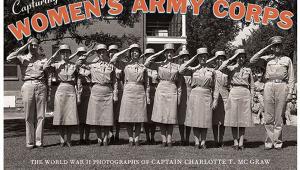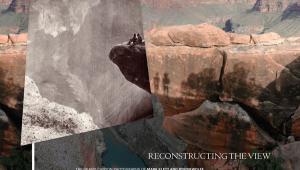Book Excerpt: Creative 52: Weekly Projects To Invigorate Your Photography Portfolio
A powerful portfolio involves so much more than just a strong grasp of the technical aspects of photography—it’s a complex mix of style, techniques, and intriguing ideas. Many photographers struggle to achieve a high-impact portfolio, feeling that they lack the creative spark to invigorate them and move their work forward.

All Photos © Lindsay Adler
Lindsay Adler’s latest book, Creative 52 is that spark—and your guide to a new and more creative portfolio in just one year! A remedy for that “average” portfolio, this collection of innovative projects will help portrait, wedding, and fashion photographers build a portfolio that draws the attention of editors and clients—leaving the competition behind. This book blends both: inspiration and knowledge that you can use to create images that attract potential clients.
Each project is divided into three parts—concept, technique, and post-processing—author Lindsay Adler’s 52 challenges each contain a description of the project, potential inspiration and suggestions of other artists to check out, and her own unique solution to the challenge—all to push you beyond your comfort zone to explore new ideas and approaches to your work.—Liner notes supplied by publisher.
We have featured Ms. Adler’s work in Shutterbug and our How-To Guide in the past and were excited to see this new project from her. You can view more of her work by typing Lindsay Adler into the Search box at www.shutterbug.com and at www.lindsayadlerphotography.com.
—Editor

Project 22: Abstract A Portrait
Canon 5D Mark II; Sigma 24-70mm 2.8 lens at 39mm; ISO 1250, 1/320 sec at f/6.3
Description
Simplify your portrait to focus on one of the fundamental elements of art: line, shape, form, value, space, color, or texture. Instead of trying to create an image that tells a story, shows what someone looks like, or evokes an emotion, focus on the essential elements of art to create a more abstract image.
Don’t be afraid to go outside your comfort zone. You don’t even need to show a person’s identity—feel free to create an image that is so abstract that the viewer can barely identify the subject. Simplistic or abstract images can make for unusually engaging imagery. Choose one element of art, and build an image that emphasizes it.
Inspiration
I first began abstracting images when I started photographing fine-art nudes. I found it liberating not to have to focus on someone’s face, tell a story, or be literal. Instead, I could photograph the human form by recording slivers of light on the skin that made for fascinating lines and curves. In many of my images, the viewer can barely discern that they are looking at a nude because I have simplified and abstracted the image.
Karel Vojkovský photographs nudes in a captivating manner by focusing on shape and form. Photographing them primarily as silhouettes, he often has multiple models pose together to make surreal graphic shapes. He focuses on the juxtaposition of smooth skin and lines against more jagged or rough surfaces such as a saw blade or scythe. Bodies become abstract shapes.
Nicholas Alan Cope explores light and form in his mysterious project “Vedas.” Based on the concept that shadow and light represent knowledge, his images included shrouded figures whose forms make graphic shapes or stunning textures. The images are abstract, and you can never see the subjects’ identities, which only makes the photos more intriguing. I fell in love with their quiet simplicity.
Portrait and wedding photographer Sara K. Byrne uses in-camera double exposures to create unusual portraits focusing on color, texture, and shape. Her images often feature profiles of brides, with the silhouettes filled with natural textures like flowers.
My Solution
One day while I was teaching a workshop, a friend brought me a present he had made. He had crafted a prism of mirrors, creating a “camera kaleidoscope” of sorts. He had taken three mirrors (about 5 inches by 12 inches) and taped them together to make a pyramid. When he handed me his homemade creative camera accessory, he challenged me to make something unique, abstract, and beautiful.
For months, the prism sat in my apartment, and I kept waiting for the right opportunity. I finally planned a shoot on the roof of my studio so that the prism would capture the sky, the skyscrapers, and the unique features of the rooftop. I would abstract the image by photographing the model and the reflections created in the mirrors, using the texture and shapes of the surroundings for additional interest.
I found that every camera movement affected the image I saw through the lens. My lens choice, where I placed the camera within the prism, and which direction I angled the lens within the prism all changed the results. The editorial was exciting because although I had planned the outfits, hair, makeup, and model, each image was entirely unexpected and abstract.
In Photoshop, I changed the image to black and white to help focus on a key element of this photograph: shape—specifically, the triangular reflections throughout the image. Color, I felt, would detract from the central goal and add visual noise to this abstract photograph.
Project 32: Shoot Super Wide
Canon 5D Mark III, Sigma 12-24mm lens at 12mm; ISO 800, 1/20 sec at f/4.
Description
When we speak about portrait lenses, we are usually thinking of something at a slightly longer focal length, maybe 70mm or longer. But would you think you could create a portrait with a 16mm lens? Or even a 12mm lens? Your challenge is to use your widest lens (or the widest lens you have access to) to create a powerful portrait image. For this assignment, “portrait” means not a close-up of the face but an image telling the story of your subject or creating a dynamic composition. Shoot super wide, and create an image that shows a different perspective, warps the scene, or simply encourages us to take a second look!
Inspiration
In the past when I was feeling starved for inspiration, I’d throw on the widest lens I had, walk around, and force myself to create interesting images with it. When shooting with a very wide-angle lens, you don’t have much control over things like compression and cropping. Instead, you must carefully examine every corner of the frame. Wide-angle lenses also help transform your environment by providing an unusual angle. Straight lines of buildings curve inward. Small spaces appear vast. Subjects and spaces can be distorted to make unusual compositions. If you shoot only with a 16mm lens or wider, you start looking at the world in a different way. A very wide-angle lens could be used to make a graphic image, create a cartoon-like effect, or simply show a scene as a lonely expanse.
Fashion photographer Baldovino Barani does not simply capture models in clothing in his fashion imagery; he shoots entire elaborate scenes. Location is an essential part of his work, and he often captures the environment with wide-angle lenses.
Photographers Daniel Sannwald and Luis Monteiro often use wide-angle lenses to distort their subjects, stretching their limbs to surreal lengths. In fashion photography, photographers often shoot from a low angle and use a wider lens to make their subjects look impossibly tall and slender.
Kansas Pitts Photography, specializing in family and wedding photography, goes as far as using fish-eye lenses for dramatic effect. In the studio’s beach portraiture, you see wide-angle lenses used to expand the scene and create playful interactions between a parent and child. Their use of wide-angle lenses gives many of the images a feeling of playfulness.
If you don’t own a very wide-angle lens, you can borrow or rent one. Aim for something that really gives you a challenge—let’s say wider than 24mm on a full-frame camera. Watch your edges, and force yourself to see in a new way!
My Solution
I was teaching a workshop in a stunning old mansion outside Nashville. Though the place was well taken care of, it felt empty and forgotten, with an air of mystery. To fit the feeling of the mansion, I was shooting young women in Victorian-style dresses. The home’s caretaker told us there were ghosts living in the house, and in fact, she said, one ghost was hanging around the workshop to watch! I decided to create an image that would represent the atmosphere of the house and the story the caretaker had shared.
The entry room was most striking to me, and I wanted the house to feel vast and dark, so I had the model open the doors, allowing light to stream around her. My camera (which was on the Aperture Priority setting) wanted to shoot the model as a silhouette because of the bright summer light behind her, but I switched to Manual mode and dramatically overexposed the image, allowing the highlights to blow out and wrap around the model. At first, I tried my usual wide lens, a Sigma 24-70mm 2.8, but it didn’t capture the space or the moment I wanted. Lying on the ground, I switched over to my Sigma 12-24 and left the lens as open as possible (12mm). Shooting so wide made the room seem to wrap around the lens, and it made the space look vast.
I centered the model to emphasize the symmetry of the room. I wanted the image to look dark and ghost-like, and thankfully the light streaming behind the model actually created a bubbled lens flare that was perfect for this effect—or maybe it was a ghost!
To emphasize the creepy mood, I asked the model to peer uneasily to the side of the room, as if looking for the secrets it contained. And because the shot is black and white, the eye focuses primarily on the light, composition, and expression rather than the rich colors of the furniture and walls. By shooting at such an extremely wide angle, I was able to create a significantly more dynamic shot that exaggerated the size of and tension in the room.
Artists To Check Out
Nicholas Alan Cope
www.cope1.com/VEDAS
Karel Vojkovský
www.vojkovsky.com
Sara K. Byrne
www.sarakbyrne.com
Shinichi Maruyama
www.shinichimaruyama.com

Where To Buy
Creative 52: Weekly Projects to Invigorate Your Photography Portfolio by Lindsay Adler (216 pages, softcover, Peachpit Press, ISBN: 978-0-321-93491-8).
Available as a print or eBook online at: www.peachpit.com/store/creative-52-weekly-projects-to-invigorate-your-photography-9780321934918.
- Log in or register to post comments

















































